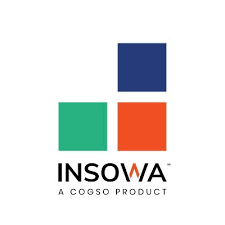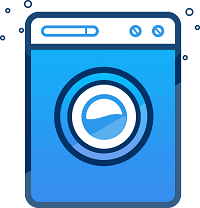Description

Quick Dry Cleaning Software

StarchUp
Comprehensive Overview: Quick Dry Cleaning Software vs StarchUp
Quick Dry Cleaning Software and StarchUp are both significant players in the realm of software solutions designed for the dry cleaning and laundry industry. Here's a comprehensive overview of each:
Quick Dry Cleaning Software
a) Primary Functions and Target Markets:
-
Primary Functions:
- Order management and tracking
- Customer relationship management (CRM)
- Point of sale (POS) system
- Inventory management
- Billing and invoicing
- Route management for delivery and pickup services
- Business analytics and reporting
-
Target Markets:
- Small to medium-sized dry cleaners
- Laundry businesses with a need for robust operational management and customer engagement tools
- Establishments looking to streamline and automate routine tasks
b) Market Share and User Base:
- The software has a decent share in markets where traditional operations are being upgraded with digital solutions.
- It boasts a broad user base predominantly in regions where small to medium laundry setups are prevalent.
- The technological adoption wave in emerging markets also contributes to its user growth.
c) Key Differentiating Factors:
- Focused tools for CRM, enabling personal interaction and engagement with customers.
- Comprehensive POS and inventory systems tailored to suit small operations efficiently.
- Strong emphasis on reporting and analytics, helping businesses understand and grow their operations.
StarchUp
a) Primary Functions and Target Markets:
-
Primary Functions:
- White-label mobile apps for customer and driver use
- POS and CRM integration
- Marketing tools to engage customers through loyalty programs
- Route optimization for logistics and delivery services
- Automated notifications and messaging systems
- User-friendly interface for seamless customer interaction
-
Target Markets:
- Both small and large scale dry cleaning and laundry businesses
- Companies looking to modernize their customer-facing operations with mobile technology
- Businesses focusing on reducing logistical inefficiencies
b) Market Share and User Base:
- StarchUp has carved out a niche particularly among businesses emphasizing customer interaction via mobile apps.
- It has expanded rapidly in urban markets with a high density of tech-savvy consumers.
- The integration with existing business systems makes it appealing to larger operations as well.
c) Key Differentiating Factors:
- Strong emphasis on mobile-first solutions, providing businesses with custom-branded apps.
- Advanced logistics management with route optimization, significantly beneficial for laundry services offering delivery.
- Marketing integration, allowing businesses to craft loyalty programs and engage users with digital marketing strategies.
Comparative Analysis:
- Technology Adoption: Both platforms provide technological upgrades but differ in approach; Quick Dry Cleaning Software emphasizes operational automation, while StarchUp focuses on customer-facing solutions.
- Market Penetration: Quick Dry Cleaning holds its strength in the traditional markets, whereas StarchUp has a competitive edge in tech-forward urban centers.
- User Experience: StarchUp provides enhanced user experience with its mobile-first approach, whereas Quick Dry Cleaning Software offers a complete suite more suited to backend management.
Conclusions:
Choosing between these products depends significantly on the business goals—whether the focus is on streamlining operations (Quick Dry Cleaning Software) or enhancing customer engagement and optimizing delivery logistics (StarchUp). The market share for each may vary regionally, and both have shown capabilities in expanding their user bases through targeted functionalities.
Contact Info

Year founded :
2010
+91 90153 25691
Not Available
India
http://www.linkedin.com/company/quickdrycleaningsoftware

Year founded :
2014
+1 704-277-0004
Not Available
United States
http://www.linkedin.com/company/starchup
Feature Similarity Breakdown: Quick Dry Cleaning Software, StarchUp
To provide a feature similarity breakdown between Quick Dry Cleaning Software and StarchUp, we need to delve into their functional offerings, user interfaces, and unique features. Based on available information, here's a comparative analysis:
a) Core Features in Common
Both Quick Dry Cleaning Software and StarchUp are designed to enhance operations of dry cleaning businesses. Here are the core features they typically have in common:
-
Order Management:
- Both platforms allow users to manage and track customer orders efficiently.
-
Point of Sale (POS) Integration:
- Each offers POS solutions that integrate with hardware for seamless transaction processing.
-
Customer Management:
- They include CRM features to keep track of customer preferences, history, and communications.
-
Inventory Management:
- Tools to manage inventory levels, track clothing repairs, and handle supplies.
-
Billing and Invoicing:
- Solutions for generating invoices, processing payments, and handling billing efficiently.
-
Route Management:
- Features to optimize delivery routes for pickup and delivery services.
-
Reporting and Analytics:
- Analytics tools to generate reports on sales, operations, and customer data.
-
Mobile Access:
- Both offer mobile applications or responsive interfaces for business management on-the-go.
b) User Interface Comparison
While both platforms offer comprehensive features, their user interfaces might differ based on design philosophy and usability:
-
Quick Dry Cleaning Software:
- Known for a clean and intuitive interface that emphasizes simplicity and ease of use.
- Typically features a dashboard that provides quick access to key information and metrics.
-
StarchUp:
- Focuses on a modern and sleek interface, possibly with more visual elements to engage the user.
- Dedicated to simplifying operations with user-friendly navigation and design consistency.
Both platforms aim to reduce complexity for their users, but their aesthetic and arrangement of features might cater to different user preferences.
c) Unique Features
-
Quick Dry Cleaning Software:
- May offer advanced customization features, allowing businesses to tailor the software to specific needs.
- Strong emphasis on integration capabilities with third-party applications and existing systems.
-
StarchUp:
- Distinct focus on customer experience, possibly offering a branded app for customers to track orders, make payments, and schedule services.
- Unique marketing tools that aid in customer retention and acquisition (e.g., loyalty programs, discounts, and promotions).
The unique features depend on how each platform differentiates itself from competitors to better serve their target users. Each platform's innovations are designed to improve the user experience, operational efficiency, or customer engagement in ways that align with their strategic goals.
In choosing between the two, businesses should consider which unique features align more closely with their specific operational needs or customer experience goals.
Features

Not Available

Not Available
Best Fit Use Cases: Quick Dry Cleaning Software, StarchUp
Quick Dry Cleaning Software and StarchUp are specialized solutions tailored for the laundry and dry cleaning industry. They streamline operations, improve customer service, and enhance operational efficiency. Here’s an overview of their ideal use cases and how they cater to different industry verticals or company sizes:
Quick Dry Cleaning Software
a) Best Fit Use Cases
-
Types of Businesses:
- Independent Dry Cleaners: Ideal for standalone operations looking to streamline their internal processes, manage point-of-sale transactions, and track garment status.
- Small to Medium-sized Dry Cleaning Chains: Supports businesses with multiple locations requiring centralized management, inventory control, and consistency in customer service.
- Commercial Laundry Services: Useful for those offering additional services like bulk laundry, alterations, and repairs, needing robust scheduling and process oversight.
-
Projects:
- Operational Modernization Projects: Fits businesses looking to update their systems from manual or outdated environments to digital, integrated solutions.
- Service Expansion Initiatives: Appropriate for businesses expanding their service range or seeking to improve logistical efficiency.
StarchUp
b) Preferred Scenarios
-
Types of Businesses:
- Multi-location Dry Cleaning Businesses: Perfect for chains that need cohesive management across locations, integrated fleet management, and customer loyalty programs.
- On-demand Service Providers: Offers capabilities for businesses providing pickup and delivery services, aiming to enhance customer engagement and optimize route management.
-
Projects:
- Digitization Initiatives: Works well in scenarios aiming to establish a stronger digital presence, especially through customer-facing apps and online scheduling capabilities.
- Customer Engagement Projects: Suitable for businesses focusing on CRM, engagement, and retention through modern communication channels and loyalty programs.
Catering to Different Industry Verticals or Company Sizes
-
Industry Verticals:
- Retail Dry Cleaning: Both software solutions cater to traditional dry-cleaning operations with features for garment management, billing, and customer service.
- Hospitality Services: They offer modules that can be adapted for hospitality requirements like hotel laundry services, focusing on high-volume, rapid turnaround.
- Healthcare: Support for uniform and linen services catering to healthcare institutions with stringent hygiene standards and delivery timelines.
-
Company Sizes:
- Small Enterprises: Quick Dry Cleaning Software is optimal due to its ease of use, affordability, and focus on essential operational features.
- Medium to Large Enterprises: StarchUp caters well to larger businesses due to its advanced logistics management, scalability, and CRM capabilities, making it suitable for businesses with diverse service offerings and larger customer bases.
Both solutions are advantageous depending on the specific operational needs and strategic goals of a dry cleaning business, allowing for flexibility and scalability as businesses grow and evolve in the industry.
Pricing

Pricing Not Available

Pricing Not Available
Metrics History
Metrics History
Comparing teamSize across companies
Conclusion & Final Verdict: Quick Dry Cleaning Software vs StarchUp
Conclusion and Final Verdict
When choosing between Quick Dry Cleaning Software and StarchUp, the decision ultimately comes down to the specific needs of the dry cleaning business in question. Both software solutions offer robust features designed to streamline operations, improve customer engagement, and enhance overall efficiency. However, each has its unique strengths and weaknesses that may appeal differently depending on business priorities.
a) Considering all factors, which product offers the best overall value?
StarchUp tends to offer the best overall value for dry cleaning businesses that prioritize a comprehensive customer engagement platform and modern features like mobile apps. Its focus on digital marketing tools, delivery tracking, and user-friendly interfaces provides a competitive edge, especially for businesses looking to expand their customer base and enhance service delivery.
b) Pros and Cons of Choosing Each Product
Pros of Quick Dry Cleaning Software:
- Comprehensive POS System: Offers a strong point of sale system tailored specifically for dry cleaning, which includes invoicing, inventory management, and customer relationship management.
- User-Friendly Interface: Known for its intuitive design, reducing the learning curve for new users.
- In-depth Reporting: Provides detailed reports and analytics that help businesses make informed decisions.
Cons of Quick Dry Cleaning Software:
- Limited Mobile Features: May not offer the same level of mobile integration as StarchUp, which could be a limitation for businesses focusing on mobile-first strategies.
- Customization Limitations: Some users may find limitations in customization options compared to competitors.
Pros of StarchUp:
- Advanced Customer Engagement Tools: Includes features like loyalty programs, digital marketing capabilities, and branded mobile apps that enhance customer interaction.
- Delivery and Route Optimization: Offers robust tools for managing and optimizing delivery routes, which is ideal for businesses offering home delivery services.
- Scalable Solution: Well-suited for businesses looking to grow, with features that support expansion and multi-location management.
Cons of StarchUp:
- Higher Initial Setup Costs: Initial setup fees and the potential need for training might be higher compared to other solutions.
- Complexity for Small Businesses: Smaller operations may find the extensive feature set overwhelming if they do not require all the capabilities.
c) Specific Recommendations for Users
-
Consider Business Size and Needs: For smaller businesses with straightforward needs, Quick Dry Cleaning Software might be sufficient because of its ease of use and focus on core operations. Particular attention should be paid to the technical support available and whether it aligns with your operational hours and needs.
-
Evaluate Customer Engagement Strategy: If building a strong customer engagement and digital marketing strategy is a priority, StarchUp provides superior tools to support those goals. This is crucial for businesses aiming to capitalize on mobile commerce and loyalty programs.
-
Examine Growth Objectives: For businesses with aggressive growth plans or those already operating multiple locations, StarchUp generally offers better scalability and advanced features for managing expanding operations.
-
Budget Considerations: It is crucial to balance the cost against the available features. While StarchUp may justify its higher cost with more sophisticated tools, businesses should ensure they will utilize these features to their full potential.
In conclusion, the choice between Quick Dry Cleaning Software and StarchUp should be guided by the specific operational needs, growth ambitions, and customer engagement strategies of the business. Both platforms provide strong solutions, but their strengths better serve different types of business models within the dry cleaning industry.
Add to compare
Add similar companies




